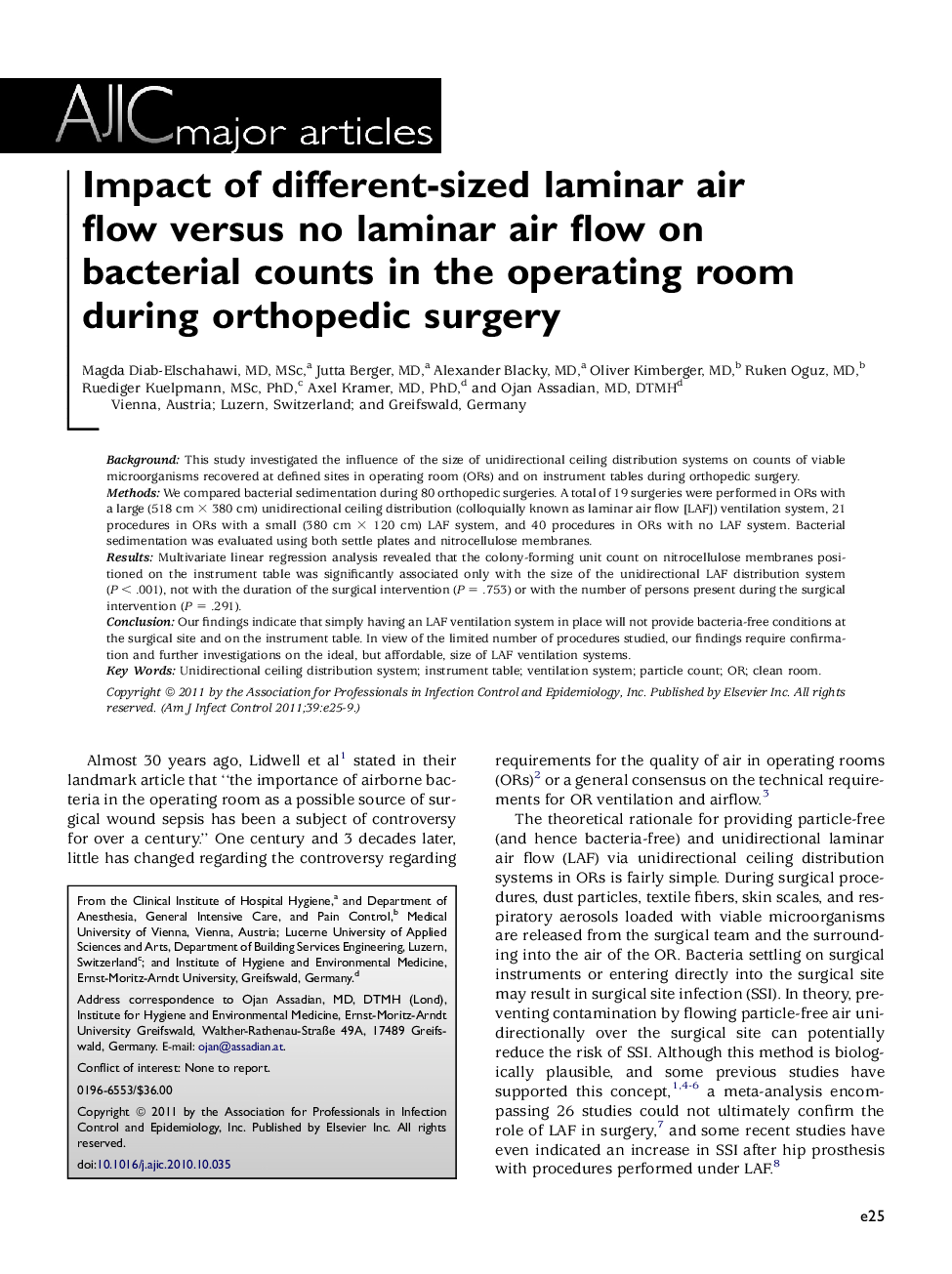| Article ID | Journal | Published Year | Pages | File Type |
|---|---|---|---|---|
| 2638805 | American Journal of Infection Control | 2011 | 5 Pages |
BackgroundThis study investigated the influence of the size of unidirectional ceiling distribution systems on counts of viable microorganisms recovered at defined sites in operating room (ORs) and on instrument tables during orthopedic surgery.MethodsWe compared bacterial sedimentation during 80 orthopedic surgeries. A total of 19 surgeries were performed in ORs with a large (518 cm × 380 cm) unidirectional ceiling distribution (colloquially known as laminar air flow [LAF]) ventilation system, 21 procedures in ORs with a small (380 cm × 120 cm) LAF system, and 40 procedures in ORs with no LAF system. Bacterial sedimentation was evaluated using both settle plates and nitrocellulose membranes.ResultsMultivariate linear regression analysis revealed that the colony-forming unit count on nitrocellulose membranes positioned on the instrument table was significantly associated only with the size of the unidirectional LAF distribution system (P < .001), not with the duration of the surgical intervention (P = .753) or with the number of persons present during the surgical intervention (P = .291).ConclusionOur findings indicate that simply having an LAF ventilation system in place will not provide bacteria-free conditions at the surgical site and on the instrument table. In view of the limited number of procedures studied, our findings require confirmation and further investigations on the ideal, but affordable, size of LAF ventilation systems.
